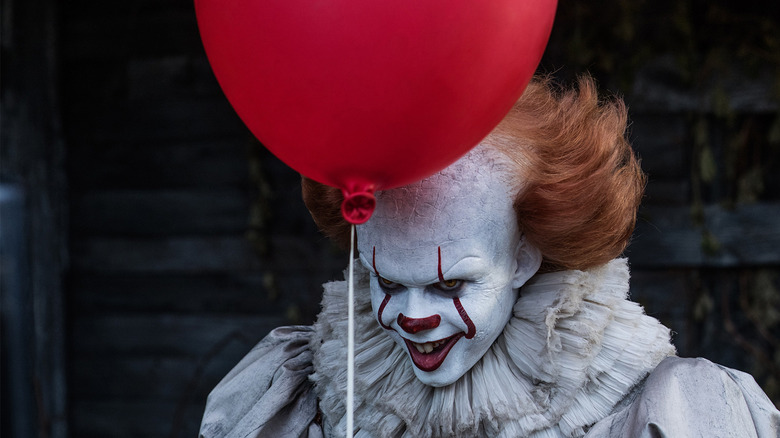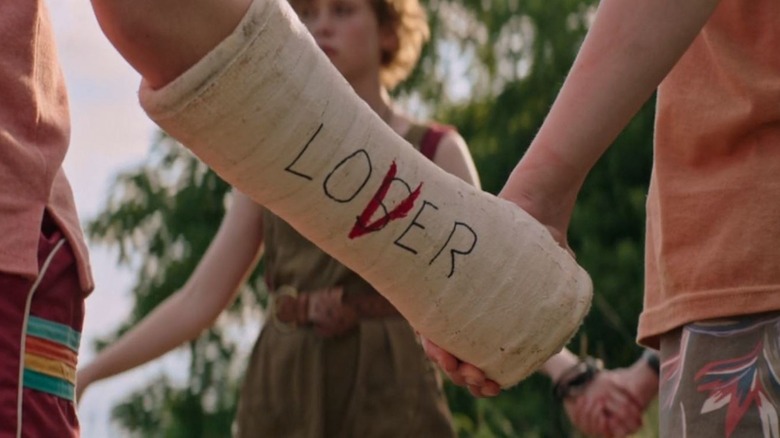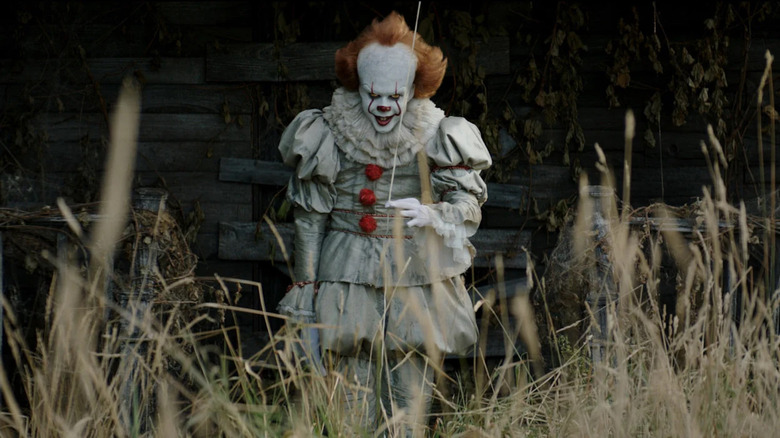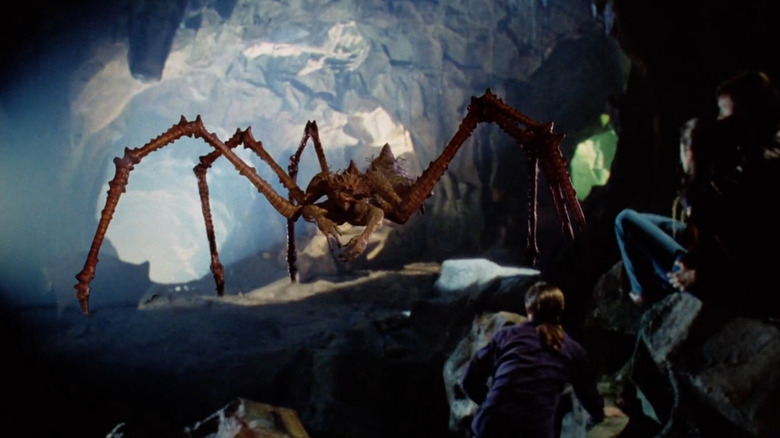The Original Ending Of It Was Never Going To Make It To The Big Screen
Any time a filmmaker tackles an adaptation they will, inevitably, have to leave some stuff behind. Whether we're talking about a novel, comic book, video game, stage play or TV show, there's just going to be some stuff that works in the original format that won't translate into a movie.
This, of course, almost always leads to a debate amongst fans of the thing being adapted about whether the filmmakers made smart cuts or royally screwed up, which is something that can never be quantified because, at the end of the day, whether a fan likes or dislikes a decision... Well, as The Dude would say, it's just their opinion, man.
Director Andy Muschietti's adaptation of Stephen King's "It" was hugely successful and made a massive pop culture impact and did so largely because the filmmaker, along with the other credited screenwriters Cary Fukunaga, Chase Palmer and Gary Dauberman, stayed as true to the source material as they could.
But even with that mindset, there are massive, sweeping changes to update the story, most notably the time period the two theatrical films take place in. In the book, the kids story takes place in the late '50s and the adult story takes place in the '80s. In the movies, they set the Losers Club's first encounter with Pennywise in the 1980s, with the adults returning in the twenty-teens.
A book could be written on all the changes and why they were made, but let's focus on the ending.
There are three big things about the end of Stephen King's book that have never been realized in any of the adaptations.
The 800lb gorilla in the room
Let's start with the one thing from the book that everybody always talks about, and that's the sex scene. After the Losers Club defeats Pennywise for the first time, they get lost in the sewer and can't find their way out. Their solution is a head-scratcher, in that it involves every member of the Losers Club having sex with Beverly. When this act is done, their bond is complete, a suppressing shadow is lifted, and they're able to find their way out of the sewer and step out into the real world and their adulthood.
King has defended this moment multiple times over the years, acknowledging that sensitivity to child sexuality is much stronger today than when he first wrote the book. He also says he didn't even consider the sexual aspect of the scene beyond that it solidifies the book's theme of moving from childhood to adulthood.
Writing to that theme is one thing, but asking seven child actors to bring that moment to life, let alone asking an audience to watch it, is a whole other can of worms and one that can be conveyed on-screen in less uncomfortable ways. In "It: Chapter One" this moment of bonding, solidifying the characters' ability to remember enough in their adulthood to come back and finally put an end to the evil clown, is changed to a blood oath.
The Ritual of Chüd
A major component of the showdown between The Losers Club and the transdimensional alien creature that likes to pose as an evil clown is called The Ritual of Chüd, which is a kind of a psychic battle of wills. This aspect is totally ignored in the 1990 mini-series and is done with a sort of sideways approach in "It: Chapter 2."
The novel has a whole psychedelic sub-story that lays the foundation for The Ritual of Chüd, including the reveal that a giant cosmic turtle is guiding The Losers Club in their battle against Pennywise. The ritual itself sees Bill taking a mind-journey to meet up with Pennywise where they stick their tongues in each others' mouths, bite down and the first to let go loses.
Weird, right? The only piece of advice this pre-teen kid has going into this mind fight is from Maturin, the benevolent turtle, who says "once you get into cosmological s*** like this, you got to throw away the instruction manual."
In the movie, Dauberman and Muschietti reimagine this trippy encounter as a Native American ritual involving a drum and some gold light.
It all leads to the same place in the end. The only way to fight Pennywise is to not be afraid of him, whether that means standing together as a group around a glowing drum or to metaphorically bite its tongue and not let go. Fear is what It feeds on, and if you take that out of the equation, you take away its power.
Mama Pennywise
Pennywise takes many forms over the course of the story and the entity's final form is that of a spider. Now, this isn't exactly what It looks like. In the text, King makes it clear that this is the closest thing to It's true face that the human mind can take without breaking. In the miniseries we get a janky practical effect of a large alien spider, and in the Muschietti film it's a CGI giant Pennywise with spider legs.
In this case, the miniseries hews closer to the book, but both leave out a fascinating element: It is a she, and she is about to have a bunch of babies.
Defeating the giant spider isn't the end of the fight in the book. The surviving members of The Losers Club also have to squash all the spider eggs, each one containing a possible new It that will continue to feed on the residents of Derry and beyond.
Considering that this could have led to a sequel, it's surprising that Warner Bros didn't insist on including this detail in "It: Chapter Two." Say the Losers stomped on the eggs and think they got them all, but the audience sees one final egg left behind. It hatches during the post-credits scene and blammo, the door is open for a sequel.
That is a lot to try to fit into the finale of a billion dollar franchise, but it remains a one of many fascinating moments from the book that never made the cut in any adaptation.



